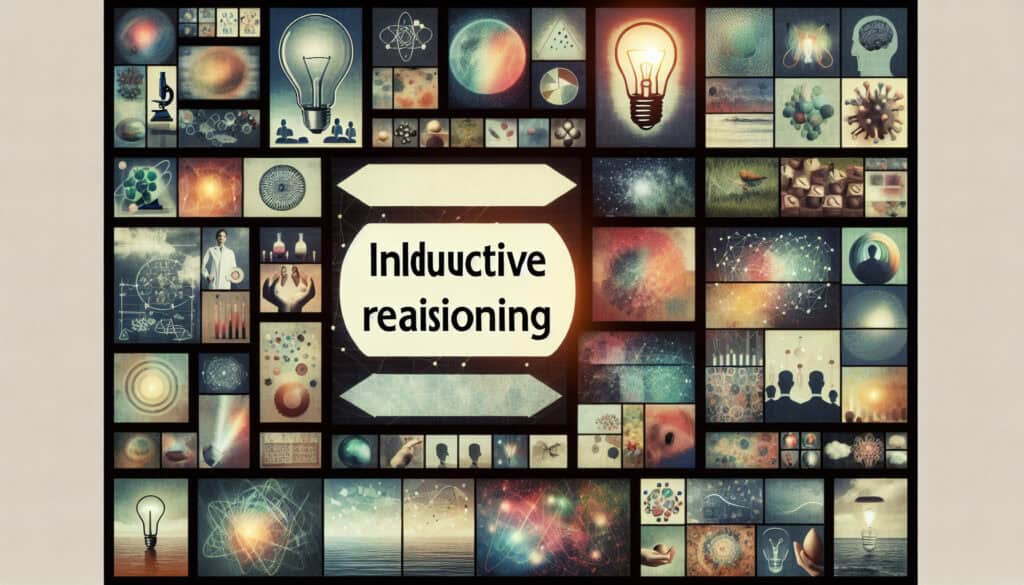To draw general conclusions from specific observations.
- Metodologías: Ingeniería, Calidad
Razonamiento inductivo

Razonamiento inductivo
- Metodología ágil, Pensamiento de diseño, Innovación, Técnicas de resolución de problemas, Control de calidad, Gestión de calidad, Investigación y desarrollo, Análisis estadístico, Control estadístico de procesos (CEP)
Objetivo:
Cómo se utiliza:
- A logical process in which multiple premises, all believed true or found true most of the time, are combined to obtain a specific conclusion. It is often used in research and problem-solving to develop hypotheses and theories.
Ventajas
- Allows for the development of new theories and hypotheses; Can be a powerful tool for discovery.
Contras
- Conclusions are probabilistic and may not be certain; Can be prone to bias and error.
Categorías:
- Ideación, Resolución de problemas
Ideal para:
- Developing new hypotheses and theories in scientific research and problem-solving.
Inductive reasoning is often applied during the early phases of product design and innovation within industries such as technology, pharmaceuticals, and consumer goods. For instance, product development teams may analyze user feedback, market trends, and existing solutions to draw patterns that inform the design of new features or products. In research contexts, scientists utilize inductive reasoning when they collect experimental data, looking for trends that could lead to new hypotheses, such as discovering a new drug compound based on observed effects of related chemicals. Initiatives that require the collaboration of cross-functional teams, including designers, engineers, and marketers, benefit from this methodology as it stimulates creative brainstorming and encourages diverse viewpoints. Participants in this process may include researchers, product managers, and end-users, whose experiences contribute valuable knowledge to shape hypotheses. The iterative nature of this reasoning allows teams to refine ideas through ongoing testing and feedback, ensuring alignment with user needs and market demands. As they synthesize collective observations into actionable insights, the teams enhance the potential for groundbreaking innovations, driving forward both scientific knowledge and practical applications.
Pasos clave de esta metodología
- Identify trends or patterns in collected observations.
- Generate hypotheses based on these observed patterns.
- Draw specific conclusions from the generated hypotheses.
- Test the conclusions through systematic experimentation.
- Refine or revise hypotheses based on testing outcomes.
- Integrate revised hypotheses into broader theoretical frameworks.
Consejos profesionales
- Utilize case studies to identify patterns and derive potential correlations in user behavior or product performance.
- Incorporate qualitative data from interviews and surveys to enrich inductive reasoning, enhancing the depth of hypothesis formation.
- Iterate hypotheses based on feedback loops from testing phases, allowing for continuous refinement of theories derived from observations.
Leer y comparar varias metodologías, recomendamos el
> Amplio repositorio de metodologías <
junto con otras más de 400 metodologías.
Sus comentarios sobre esta metodología o información adicional son bienvenidos en la dirección sección de comentarios ↓ , así como cualquier idea o enlace relacionado con la ingeniería.
Contexto histórico
1687
1687
1750
1788
1800
1800
1800
1678
1687
1738
1757
1788
1800
1800
1800
(si se desconoce la fecha o no es relevante, por ejemplo "mecánica de fluidos", se ofrece una estimación redondeada de su notable aparición)















Publicaciones relacionadas
Programa Maestro de Producción (MPS)
Personalización masiva
Embudo de marketing
Auditoría de marketing
Índice MAPO (Movimiento y Asistencia de Pacientes Hospitalizados)
Planificación de recursos de fabricación (MRP II)